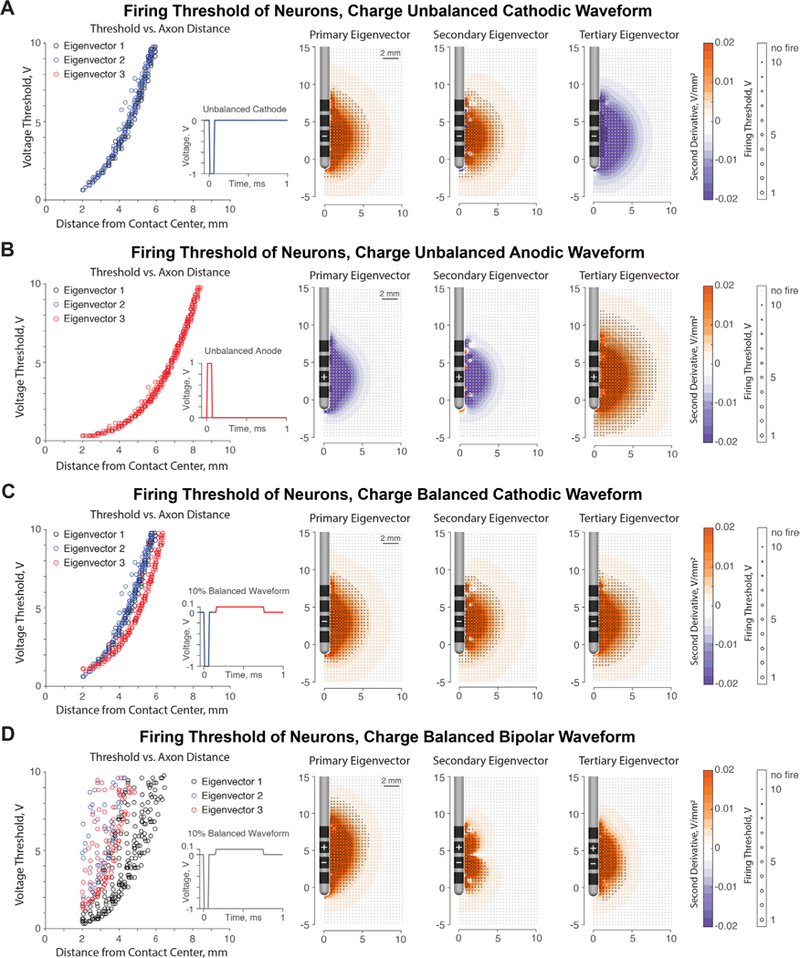Figure 3.

(A) An unbalanced cathodic pulse causes firing of neurons oriented in the primary and secondary eigenvector directions, which represent passing axons (positive second differences, in orange). Neurons in the tertiary eigenvector orientation do not fire, as predicted by the eigenvalues (negative second differences, in purple). (B) An unbalanced anodic pulse reverses the fiber orientation recruitment from the cathodic pulse. Orthogonal neurons (tertiary eigenvector from the cathodic pulse) fire exclusively, whereas adjacent passing axons do not fire. (C) In a 10% charge balancing cathode-first stimulus regime, neurons at all orientations are approximately equally likely to fire due to the cathodic and the anodic component of the pulse. (D) Firing thresholds for the bipolar stimulation case, 1–2+ configuration. There is a larger range of activation thresholds for neurons along the principal eigenvectors due to the combination of passing and orthogonal fiber segments within the primary and tertiary eigenvectors (as shown in, figure 2(B)). The differing firing thresholds on the secondary eigenvector is due to the differing influence of the cathodic phase and the anodic phase on latitudinal fibers. Ultimately, the second derivatives calculated from the Hessian predict firing for the respective fiber orientation. Note: Distance to contact center is measured from nearest active contact.
